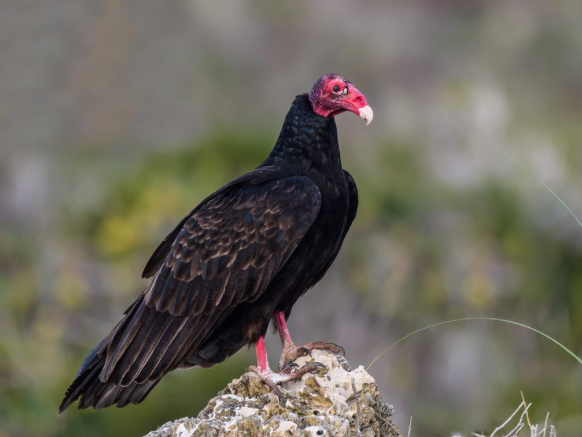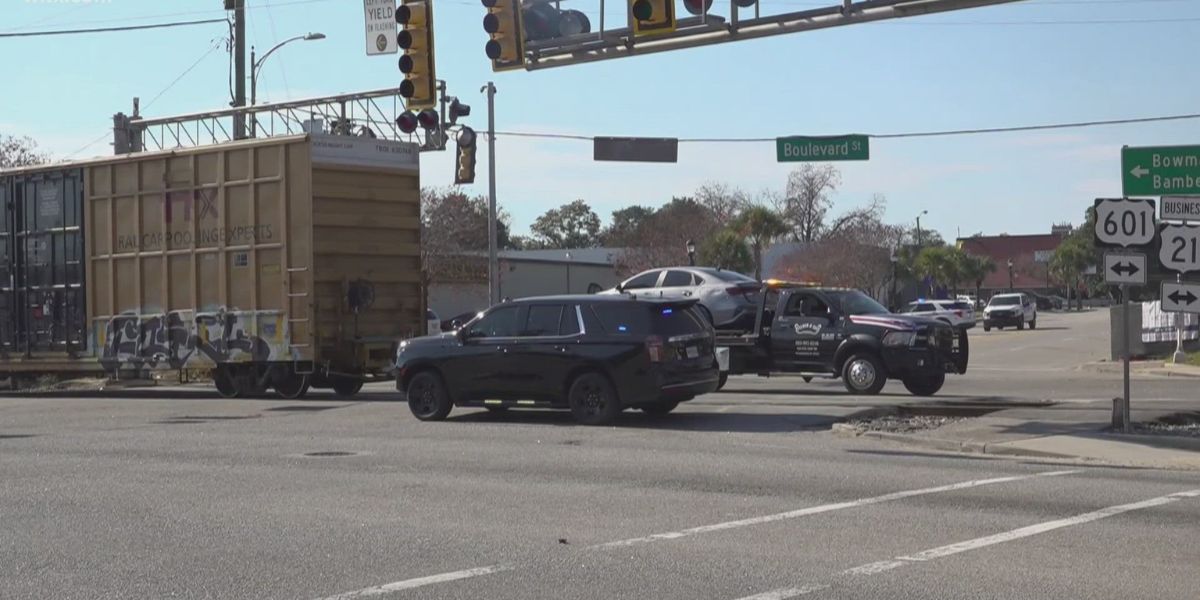Kentuckians have a conflicted relationship with vultures, a.k.a. buzzards.
They are most often observed feasting on road kill deer, raccoons, squirrels, groundhogs, rabbits, even skunks. They gather in rowdy groups on the pavement, or in road side ditches, creating a potential hazard to motorists driving rural backroads. As vehicles approach, they sometimes fly up close to traffic.
Vultures feed on rotting, sometimes maggot-laden flesh. Their vocalizations are grunts and low hisses. It’s easy to see why vultures have a public relations problem.
There are two species of vultures in Kentucky, both are members of Family Cathartidae.
Turkey vulture
The Turkey Vulture (Cathartes aura) is found statewide, with lower populations in the southeastern mountain counties.
A dark bird with long, broad wings, the Turkey Vulture feeds strictly on carrion, and is larger than most raptors except eagles and condors. The Turkey Vulture has a wingspan of 63 to 72 inches, stands 24 to 32 inches tall, and weighs 1.8 to 5.3 pounds.
Male and females are identical in plumage and coloration, and are similar in size.
Their wing tips are pointed, and their tails extend past their toes in flight. When soaring, turkey vultures hold their wings slightly raised in a “V” shape when seen head-on.
Turkey vultures appear black from a distance but up close are dark brown with a pinkish-red unfeathered head and pale whitish bill. While most of their body and wings are dark, the undersides of their flight feathers are paler, giving a two-toned appearance.
Their aerial acrobatics are quite impressive. They are able to ride thermals to impressive heights, and glide effortlessly with few wingbeats, spiraling back down to the ground, using their keen eyesight and sense of smell to help them locate fresh carcasses.
Some birds are year-round residents in Kentucky, but most breeding birds migrate southward during the winter, returning typically by March.
Their geographic ranges extends to all Lower 48 states and parts of five provinces in southern Canada. Preferred habitat is open or semi-open country, especially within a few miles of rocky or wooded areas providing secure nesting sites.
Nesting in Kentucky usually starts in March, peaking by mid-April. Little or no nest is made, with females laying two to three cream-colored eggs with brown spots in caves in cliff lines, hollow trees, stumps and fallen logs.
Incubation is by both parents, usually lasting 34 to 41 days.
One parent remains with young much of time at first. Both parents feed young, by regurgitation. Their young fledge in about 10 weeks, and family groups remain together until fall.
Black vulture
The Black Vulture ( Coragyps atratus ) is found statewide, but in much lower numbers than the Turkey Vulture.
The Black Vulture was rare in the state historically but range expansion and population increases have made this vulture more common throughout the state, and states just to the north of Kentucky.
Today, its geographic range extends from southern Pennsylvania, down the Ohio River Valley and westward to east Texas, eastward along the Gulf Coast to Florida, and up the Atlantic Coast to northern Virginia.
The Black Vulture is a stocky, short tailed bird with broad wings. They stand about 22 to 24 inches tall, with about a five-foot wingspan. Its plumage is black, with a featherless, grayish-black head and neck, a short, hooked beak, and white stars under the wingtips.
The two species co-mingle, with the black vulture making up for its poor sense of smell by following turkey vultures to carcasses.
Black Vultures are aggressive and often drive Turkey Vultures away from food.
While the Turkey Vulture does not take live prey, the Black Vulture will feed on eggs, small reptiles, or small newborn animals, including livestock, deer, rodents, and rabbits. They are opportunistic, often preying on weakened, sick, elderly, or otherwise vulnerable animals.
Feeding on newborn calves has been problematic for Kentucky’s thriving cattle industry. In general, vultures are attracted to livestock birthing sites to feed on the afterbirth and stillborns.
Predation on livestock by Black Vultures has been increasing in recent decades.
Livestock producers who are concerned about vultures gathering at birthing sites should use loud noises to scare vultures away. Vultures are protected under the Migratory Bird Treaty Act of 1918, and cannot be killed without a federal permit.
If attacks by Black Vultures on livestock are documented, landowners can apply for a federal permit to reduce the black vulture populations on their farms.
Landowners should contact the US Department of Agriculture Wildlife Services at 502-254-1592, and photos of the damage should accompany the application.
Since vultures have no predators, and mammal populations are high, there will always be plenty of food for vultures in rural, suburban and even urban areas of Kentucky.
With vultures, you have to take the good with the bad. They provide a needed service, but it can come at a price.






